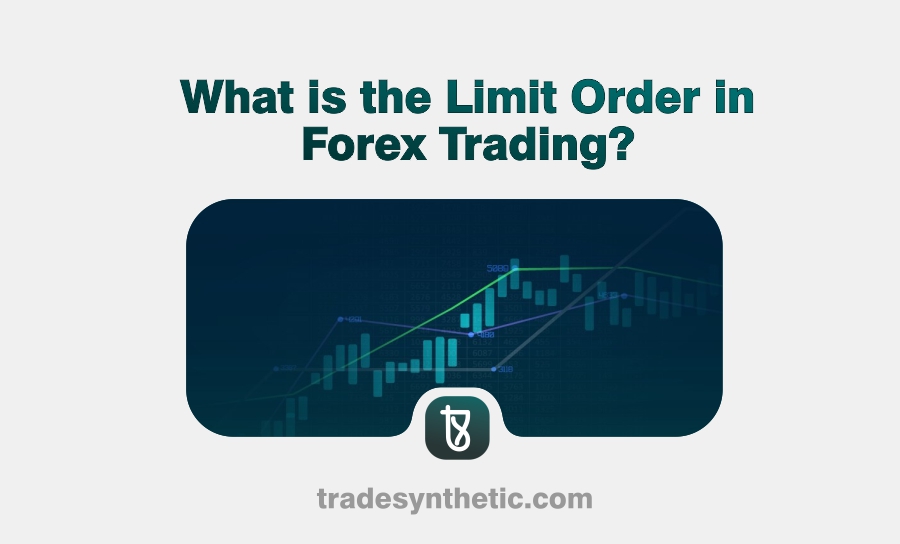In forex trading, different types of orders help traders manage their trades effectively. Among these, the limit order is one of the most powerful tools. It helps traders control their entry and exit prices, making it essential for trade execution and risk management.
In this article, we shall examine everything you need to know about limit orders, including their types, benefits, and how to use them for better trading results.
What is a Limit Order?
A limit order is an instruction to buy or sell a currency pair at a specific price or better. Unlike market orders, which execute immediately at the current price, limit orders give traders more control by setting a target price.
This order type is useful when traders believe the market will reach a specific price level before reversing.
For Example, you want to buy EUR/USD but only if the price drops to 1.0950. Instead of watching the market constantly, you place a buy limit order at 1.0950. When the price reaches 1.0950, your order executes automatically.
Types of Limit Orders
In forex trading, there are primarily two types of limit orders: Buy Limit Order and Sell Limit Order.
Buy Limit Order
A buy limit order is placed below the current market price, indicating that you aim to purchase the currency pair once its price declines to your specified level. This strategy is employed when you believe that the currency’s price will decrease to a certain point before rebounding upward.
Example: If EUR/USD is trading at 1.1000 and you anticipate that the price will drop to 1.0950 before rising, you would set a buy limit order at 1.0950. Once the market reaches this price, your order is executed, and you enter a long position.
Sell Limit Order
A sell limit order is positioned above the current market price, specifying that you intend to sell the currency pair once its price ascends to your desired level. This approach is utilized when you expect the currency’s price to rise to a certain point before declining.
Example: If GBP/USD is trading at 1.3000 and you predict that the price will rise to 1.3050 before falling, you would place a sell limit order at 1.3050. When the market reaches this price, your order is executed, and you enter a short position.
Benefits of Using Limit Orders
Using limit orders can significantly improve trading efficiency. Here’s why they are beneficial:
- Better Price Control: You enter trades only at your desired price or better.
- Reduced Emotional Trading: No need to manually watch the market or make impulsive decisions.
- Risk Management: Helps control entry and exit points, reducing potential losses.
- Automation: Orders execute automatically when the market reaches your price, even if you’re not online.
- Lower Trading Costs: Limit orders help avoid slippage and unfavorable price movements.
Potential Drawbacks of Limit Orders
While limit orders offer distinct advantages, it’s essential to be aware of their limitations:
- Non-Execution Risk: If the market doesn’t reach your specified price, the limit order remains unfilled, and you may miss potential trading opportunities.
- Partial Fills: In volatile markets, limit orders may be partially filled if there’s insufficient liquidity at the specified price, leading to incomplete positions.
- Market Reversal: The market may briefly touch your limit price and then reverse direction, resulting in a less favorable position than anticipated.
How to Place a Limit Order in Forex Trading
Placing a limit order is simple and can be done in a few steps:
1. Choose a Reliable Forex Broker
Ensure you have a trusted broker that offers an easy-to-use trading platform.
2. Access the Trading Platform
Log in and go to the order entry section.
3. Select the Currency Pair
Pick the forex pair you want to trade (e.g., EUR/USD, GBP/USD).
4. Enter Order Details
- Order Type: Choose ‘Buy Limit’ or ‘Sell Limit’.
- Price Level: Enter the price where you want the order to execute.
- Order Duration: Set how long the order should remain active (e.g., ‘Good Till Cancelled’).
5. Confirm and Place the Order
Review all details and submit the order.
6. Monitor the Trade
Keep an eye on your order and adjust if necessary.
Conclusion
In conclusion, Mastering the use of limit orders is a vital component of successful forex trading. By allowing you to specify exact entry and exit points, limit orders provide enhanced control over your trades, contributing to more disciplined and strategic trading practices.
However, it is important to remain mindful of the potential drawbacks, such as the risk of non-execution and partial fills. By integrating limit orders thoughtfully into your trading plan, you can better manage risk and optimize your trading performance.
Frequently Asked Questions (FAQs)
What is the difference between a limit order and a market order?
- A limit order sets a specific price at which you want to buy or sell, ensuring better control. A market order, however, executes instantly at the current market price.
Can a limit order expire?
- Yes. You can set it as “Good till Cancelled” (GTC) or as a “Day Order”, which expires if not executed within the trading day.
What happens if the market never reaches my limit price?
- The trade will not execute, meaning you might miss the trading opportunity.
Can I cancel or modify a limit order?
- Yes. You can cancel or adjust a limit order any time before execution.
Is a limit order better than a stop-loss order?
- Both serve different purposes. Limit orders control your entry/exit price while Stop-loss orders automatically close trades to limit losses.
How do I choose the best price for my limit order?
- Use technical analysis, such as support/resistance levels, trend lines, and Fibonacci retracements.
Are limit orders useful for all trading strategies?
- Limit orders are great for swing trading, scalping, and range trading but may not suit momentum traders who need fast execution.










